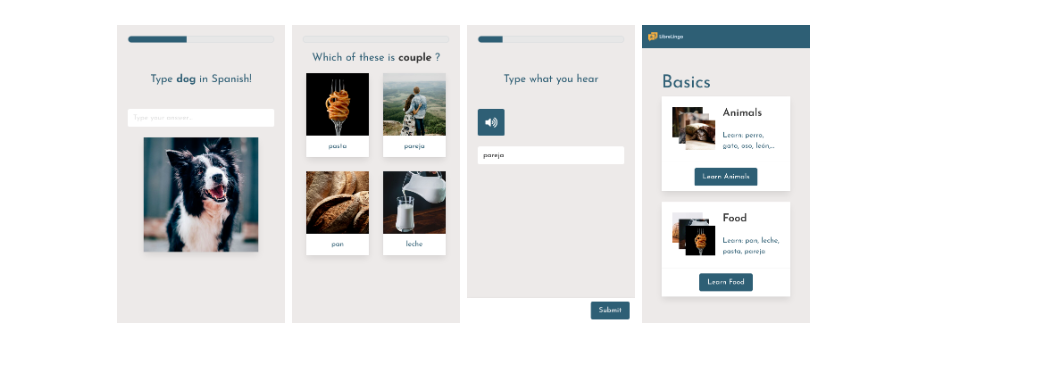LibreLingo is A Community-powered Language Learning Platform
Table of Content
LibreLingo is a comprehensive, free platform for language learners, supported by a global community of language enthusiasts.

LibreLingo offers an official web app, which is very lightweight and written in Javascript using Svelte framework and pouchDB by the way, to try out LibreLingo courses interactively right in your browser, no installation required!
LibreLingo was created by Dániel Kántor and various contributors.
Features
- 🏹 practice using interactive exercises
- 🤹 spaced repetition
- 📊 save and monitor progress
- 🔄 synchronise progress across multiple devices
- 📱 works on various devices such as phones, tablets and desktop computers
- 🧑🤝🧑 owned by you, the community
- 🕊️ most courses are free, as in freedom and also as in beer
New update and new features
- 🏁 Demo course content in Spanish for English speakers
- 🏁 Some basic building blocks of course content implemented
- 🏁 Developers can use course editor
- 🏁 Basic theme/branding
- 🏁 Course progress can be properly synchronised across devices
- 🏁 Course editor can be accessed by all course contributors
- 🏁 At least the basics of the Spanish course are ready
- 🏁 Most of the course building blocks are implemented
- 🏁 All of the basic building blocks of courses are implemented
- 🏁 Spaced repetition implemented
Key Components in LibreLingo's YAML Structure:
LibreLingo uses YAML (YAML Ain't Markup Language) as a flexible and readable structure for defining course content and language learning materials.
YAML files in LibreLingo store course configurations, vocabulary, grammar lessons, and exercises, organizing them in a hierarchical, easy-to-edit format that makes course creation accessible for contributors.
- Course Metadata: Defines essential details like course title, description, and language pair, helping users identify the course at a glance.
- Skills and Topics: Each course is divided into skills (e.g., "Basics," "Greetings"), with YAML entries defining vocabulary and grammar associated with each skill.
- Lessons and Exercises: YAML organizes lessons by skill, with each lesson containing specific exercises (e.g., multiple-choice, matching) aimed at reinforcing vocabulary and grammar points.
- Vocabulary Entries: YAML files list vocabulary terms, translations, and pronunciation guides, creating a structured dictionary for each course.
- Grammar Rules and Tips: YAML includes grammar instructions or cultural tips, allowing learners to deepen their understanding within the context of each lesson.
The YAML structure in LibreLingo keeps course content easy to modify and adapt, making it ideal for collaborative language course development. This structure allows contributors to expand or create new courses without needing extensive technical skills.
License
The source-code is released under the open-source AGPL-3.0 License.
Resources & Downloads












